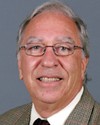Mr. Speaker, I thank you for giving me the opportunity to speak to this important motion introduced by my colleague, the member for Joliette. It says:
That, as the federal government’s 16% contribution to health care spending is clearly inadequate, this House urge the government to invest at least half the current year’s surplus in health care, over and above the $2 billion already promised, in order to achieve as rapidly as possible the stable 25% federal contribution called for by Quebec and the provinces.
This motion is one of the most important motions that we have had to deal with here in this House, for several reasons. The first reason is that, for the public, and this is true in Quebec as well as in Canada, health care is the number one concern and priority.
The worst thing about this whole saga is that, when cost-sharing programs were started in the 1970s, there was talk about a fair share between the provinces and the federal government. Indeed, before the establishment of the Canada social transfer, which came about because of cuts ordered by the former finance minister, who is now the Prime Minister, all programs that existed, whether the social assistance program, the health care program or the distinct education program, had been signed between the federal government and the provinces on a 50-50 cost-sharing basis.
However, in the 1970s, this proportion started to be reduced. When the three distinct programs were changed into one transfer, that being the Canada social transfer, the then finance minister, who is now the Prime Minister, started to make more cuts in social and health programs. Thus, today, despite the one-time payment of $2 billion that will be made for health care, the federal government's contribution is only 16%.
It is not because the federal government does not have the means. It has had the means since 1995. The federal government is recording higher and higher surpluses each year. The federal government, through the former finance minister, now Prime Minister, and the current Minister of Finance, is like a broken record saying year after year that there is no surplus this year or a very small one and that times are tight. That has been the message since 1995. Since 1995, there has been no respect for the public. Since 1995, tales have been told both in and outside the House about the size of the surplus.
This year again, the surplus for fiscal year 2003-04 will be several billion dollars. For this year alone, there is talk of $8 billion. If we subtract from this the $2 billion promised as a one time payment for health, there is still a $6 billion surplus.
What can we do with this $6 billion? That is what we are proposing today. We should take half of this $6 billion amount, or $3 billion, and give it to Quebec and the provinces, so they can respond to the number one priority of Quebeckers and Canadians.
The federal government cannot claim that health care is a priority and, at the same time, not pay its share, its fair share, of health care funding.
The federal government has abandoned the sick. If there are serious problems in health care across Canada, it is because of the federal government. A few days ago I read that 10,000 women in Quebec with breast cancer are suing the Quebec government because they were not treated in time.
The Quebec government is not to blame, but rather the federal government, which slashed transfer payments and did not allow Quebec or the provinces, which are responsible for providing health care, to provide adequate health care to these 10,000 women with breast cancer. That is the reality. The federal government has abandoned the sick.
Even with the increase in the rate at which the federal government is raising the amount of its transfers for health care, we will never get to the 25% required by all provinces. The provinces are unanimous on this. The 25% level will never be reached unless some mechanism is put in place like the one in the Bloc Quebecois motion, which would make it possible to pay half of the surplus year after year to Quebec and the provinces. It would take several years before the 25% level would be reached. Neither we nor the public are asking anything unreasonable.
The funds administered here belong to the public. Nearly all taxpayers feel that health care is the number one priority. If that is the case, there must be a system like this one put in place. There will be money, both this year and next. The federal taxation system is such that there will be a surplus year after year. One need only look at the taxation structure. Federal income tax, which is the major source of public funds, is where there is the highest growth year after year.
As far as Quebec is concerned, the bulk of individual taxes go to the federal government. The split is 60-40, so if 60% of something that is growing so rapidly goes into the federal coffers year after year, this means that the surplus is growing year after year. This is a structured system, and is the reason we say fiscal imbalance must be settled. This is not some sort of spirit vision; fiscal imbalance is not something virtual, but reality.
The fact that there is a fiscal imbalance is proof that the federal government has too much money compared to its responsibilities. The governments of Quebec and the provinces do not have enough compared to their fundamental responsibilities. These include health, education and income security for the disadvantaged. It does not require a PhD to understand this.
Yet we have been calling upon the Prime Minister since 1995, since he had the great idea to just push a button and create a system doing away with the need to come before the House of Commons every year to justify the slashing cuts made to federal transfers for health, education and social assistance. We have been saying this for years, and we are saying it to him here again today.
Now it is not just the Bloc Quebecois who keep telling him this. All the provincial premiers are saying the same thing; it is unanimous. The public is dismayed and so are the 10,000 women with breast cancer who did not receive proper care because of the drastic cuts made by the former finance minister, the current Prime Minister.
At the rate things are going, with the aging population and health costs increasing by 5% to 7% a year, health spending is going to have a stranglehold on the finances of Quebec and the provinces. While surpluses are going to be accumulated and bragged about here, the provinces will have a terrible time providing quality care. This is going to get worse every year.
The federal government has abandoned the sick. We would not mind so much if the government had the courage to respond to the needs of the public, if it listened to the cries of distress from the sick in Quebec and Canada. We would not mind so much if the Prime Minister rose and said that he had made a mistake and that now we are going to rethink federal transfers and look at 25% or more because we made a mistake in the past. We have caused the health care system to deteriorate.
Having itself caused the health care system to deteriorate for years, the government is calling for universal health care. What fine principles. The provinces are being undercut and yet they are being asked to meet all the criteria of the Health Act. What we are going through right now is completely inhuman. This government is more than just deaf and blind; the pathology is much deeper than that. It does not know the first thing about the public's real needs.
Not only has it abandoned the sick. The federal government has abandoned everyone, all the stakeholders, all the sectors with the greatest need. The unemployed are one example.
Less than 40% of these people qualify for employment insurance benefits. Why? It is once again because of the drastic cuts in the employment insurance program and because the criteria set by the federal government were tightened up. This tightening up is the work of the former finance minister and current Prime Minister, who puts a hand on his heart when he is talking about the poor.
He should stop talking and start acting. He has the means to act, but he does not. In fact, he does act: over the past few years, $45 billion have been stolen from the employment insurance fund. This is money that did not go to the unemployed. Is the government not abandoning the unemployed?
Also, we have been saying for years that seasonal workers are directly hit, that the federal government is destabilizing the regions with this employment insurance program, that the spring gap is creating havoc in rural communities across Quebec and Canada. But the government is still turning a deaf ear. It has abandoned the unemployed. Not only has the government abandoned them, it stole the money to which these people were entitled to cope with the loss of their job.
The government also abandoned our seniors. For a number of years, it did not tell them about the guaranteed income supplement. It made things so complicated for seniors to qualify for that program that several thousands of them did not benefit from it, and this situation lasted several years.
Fortunately, my colleague, the hon. member for Champlain, rose one day to condemn this situation. He toured Quebec to hold information sessions for seniors, tell them about the program and explain to them how to get the supplement. In fact, Bloc Quebecois members from all over Quebec helped find those seniors who were not benefiting from the program but qualified for it.
In the riding of Saint-Hyacinthe—Bagot alone, there were 1,360 seniors who could have benefited from the guaranteed income supplement. The Bloc Quebecois, myself and my office staff did a blitz in that riding to find the poorest of those seniors who qualified for the guaranteed income supplement. We found about 70 of them who later received payments of $4,000 or $5,000. For these people, that money makes all the difference between extreme poverty and relative poverty or relative wealth.
Nobody had told them about these programs before we did. Nobody, except the Bloc Quebecois, had helped the most vulnerable seniors in our society get this guaranteed income supplement.
Things have changed since that time. Understandably, with all the scandals plaguing the government, it finally decided to do something. However, it took months if not years to make the government understand that some of the most disadvantaged seniors in our society are being shafted.
The other day, I was listening to Jean Lapierre who was saying that he remembered being wined and dined by Mr. Lafleur, from Lafleur Communications, who is involved in the sponsorship scandal after having received hundreds of thousands of dollars of taxpayer money for a job that was never done. I heard him say that he was served very good wine at Mr. Lafleur's, who will soon be accused of corruption. He talked about a Petrus or a Bordeaux Premier Grand Cru, at $5,000 a bottle.
Do you know what I would have done in my riding of Saint-Hyacinthe—Bagot with $5,000? I would have helped a senior who is now living in poverty by giving that person a chance to have a higher standard of living. But, in one evening, Mr. Lapierre drank that bottle offered by Léon Lafleur, a product of corruption.
The Prime Minister always sounds very sincere when he talks to us about poverty and the most disadvantaged in our society, with his chief organizer in Quebec, Jean Lapierre. Mr. Lapierre is having nice meals washed down with Petrus and Bordeaux Premier Grand Cru at $5,000 a bottle while we are out there looking for some of the poorest seniors. Is that fairness and social justice? It is outrageous.
The federal government has abandoned seniors, but that is not all. It has also abandoned farmers throughout Quebec and Canada, including those from the ridings of Saint-Hyacinthe—Bagot, Drummond and Verchères—Les-Patriotes who come to our offices to tell us how desperate they are.
As former chief economist for the UPA, I am seeing for the first time such a widespread and profound crisis in all sectors of agriculture. This is the most important economic sector for Quebec, along with agri-food.
This is first time I have seen such a profound crisis. Grain prices for producers have bottomed out for the past five years. Why have they bottomed out? Because the Americans are heavily subsidizing grain exports around the world. They are pushing down international prices, and we are the ones suffering.
At the same time, the federal government is slashing subsidies to producers. This means that the agricultural industry is being destroyed, and we can no longer compete with American subsidies. That is the reality.
While we were taking the high road and saying, “We must respect WTO agreements, etc.”, the Americans were not and they are kicking us out of the market, with the federal government's help and our taxes.
The cattle industry is a victim of the mad cow crisis. The cull cow industry is another victim of mad cow. I do not know how many times I have heard the government tell us, “We are going to provide funding. A new program is coming”. Not one cent has gone to farm families since these announcements were made.
Since last year, the price of beef has dropped 74%. I invite members to find me an individual, producer or manufacturer in any other economic sector, capable of surviving a similar disaster. Prices have dropped 74%.
Now, the federal government is introducing programs. Not one cent has gone to farm families in Quebec or elsewhere in Canada. These people are in crisis. This is the first time there has been such a profound crisis since 1982, when interest rates climbed above 20%. This is the first time there has been such a serious crisis. At the same time, announcements are being made, not one penny has been paid, and families are the ones suffering.
Once again, the beef and dairy sectors in Quebec and the rest of Canada are being dismantled, because of the government's inertia. When one looks at the amounts being offered in the programs of the federal and provincial governments, it is clear that they cover barely 50% of the losses being suffered by producers selling beef cattle and cull cows.
With respect to cull cows, the latest federal program does not even take into account the rate of replacement in the dairy sector. They talk about a 16% replacement rate, while in reality it is 25%. There is a 25% turnover in the herds each year. There is no compensation for this. Not even half of the losses are covered by the new programs.
If we look at the entire agricultural sector, we see that there is no logic anymore. Since last year there has been a decrease of 54% in net farm income, which never was very high. That is net income, the income that remains after paying all the costs of production. That net income fell by 54%. Debt, on the other hand, keeps growing.
I know why. In a situation where prices are so low that there is no income, self-financing becomes necessary in order not to be outstripped by the competition, and farmers end up with a debt load that has been growing exponentially in the last four or five years.
And what is the federal government doing right now in the agricultural sector? It is trying to ram down Quebec's throat an agricultural policy framework that Quebec does not want. In Quebec, we have income stabilization programs. We have funding programs.
We have—with La Financière agricole du Québec—redefined all types of intervention. And now the federal government comes in and throws its weight around, and because the farmers are in a state of disarray, it threatens them, “If you do not join the agricultural policy framework, if you refuse it, you will not have one cent of federal money”.
It is the taxpayers' money. The farmers have been abandoned and, moreover, this policy they do not want is being shoved down their throats.
In fact, and I will end with this, the only ones not abandoned—since the federal government has abandoned the sick, the jobless, the elderly, the farmers, the 10,000 women with breast cancer—were the ad agencies, the friends of the government, who received hundreds of millions in the sponsorship scandal. Likely a sizeable portion of that found its way back to the Liberal Party of Canada's slush fund.
People will remember that. They will remember. They will also remember that the Prime Minister maintained a tax treaty with Barbados, a shameful thing which has benefited the billionaires of this country, who transfer capital there in order to avoid paying taxes.
He himself transferred management of CSL International to Barbados in order to not pay a cent of tax, or very nearly, about 2%. People will remember that. They will remember that he himself introduced a bill in 1998, Bill C-28, which has saved him $100 million in taxes since then. They will also remember that, during his watch, $161 million in government contracts went to CSL, and they will realize what kind of government we have here. It is corrupt through and through.
While the public, the disadvantaged, the elderly, the sick, the jobless, those who are in desperate straits, have all been abandoned by the federal government, the agricultural sector is also in a desperate situation. We will fight until we drop to make the government see some sense and behave honestly. It is high time it did.






















